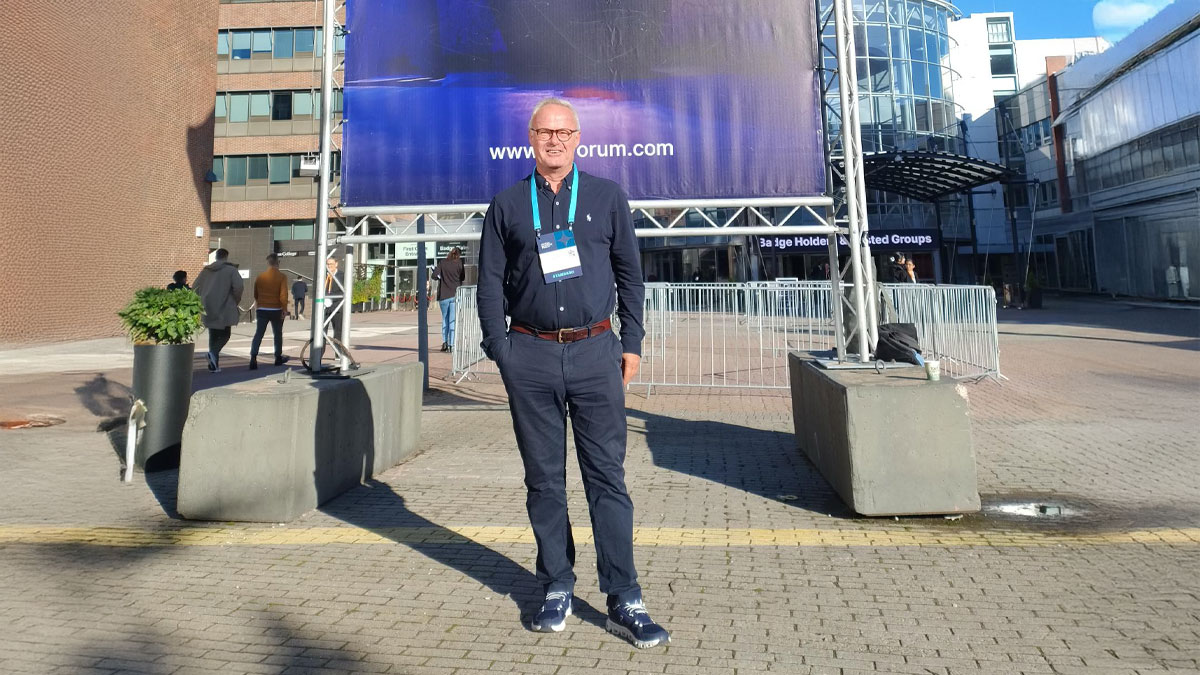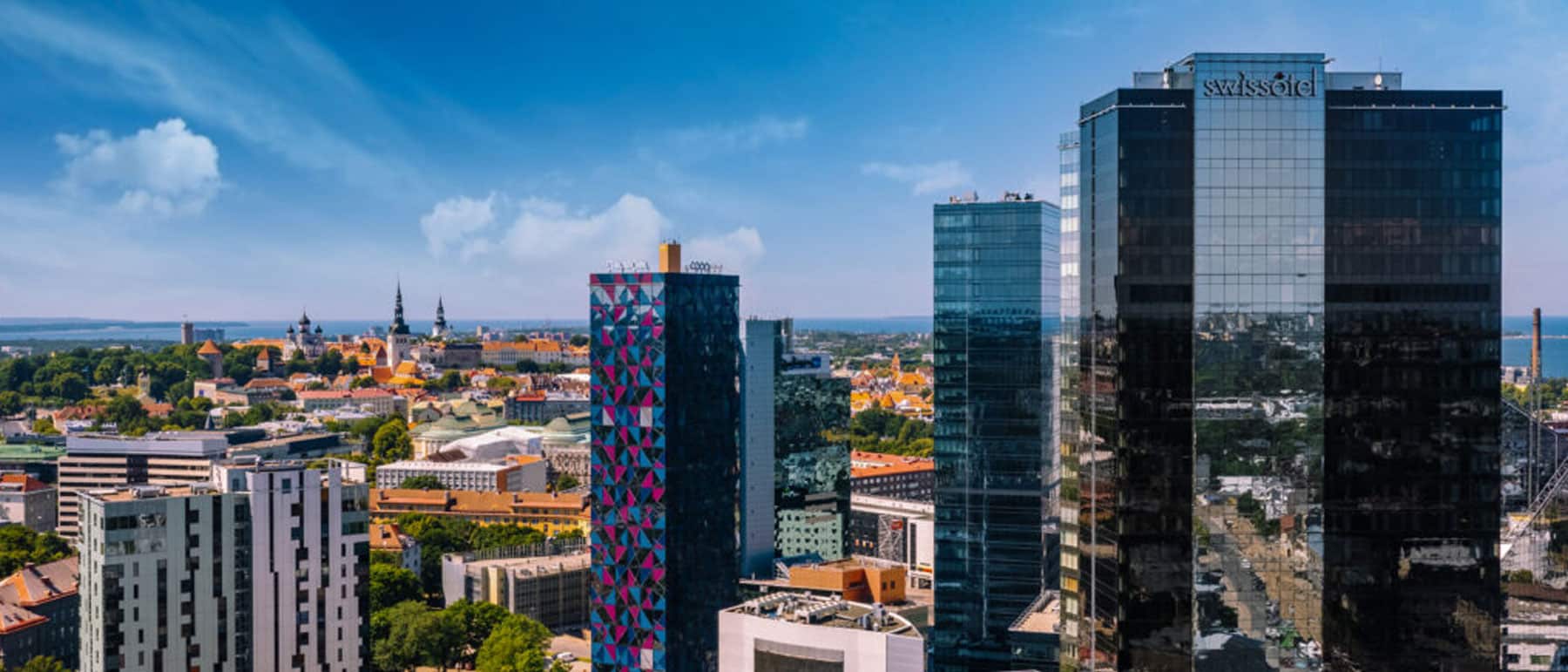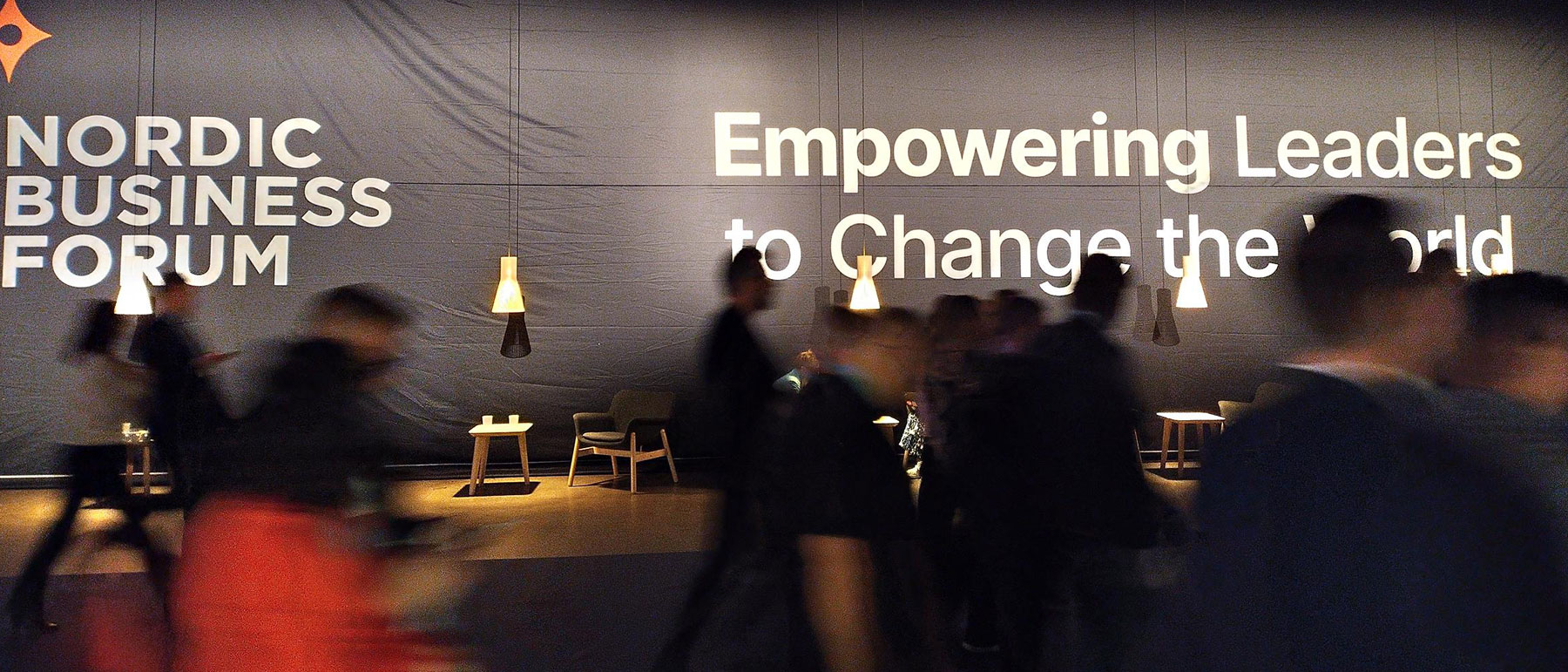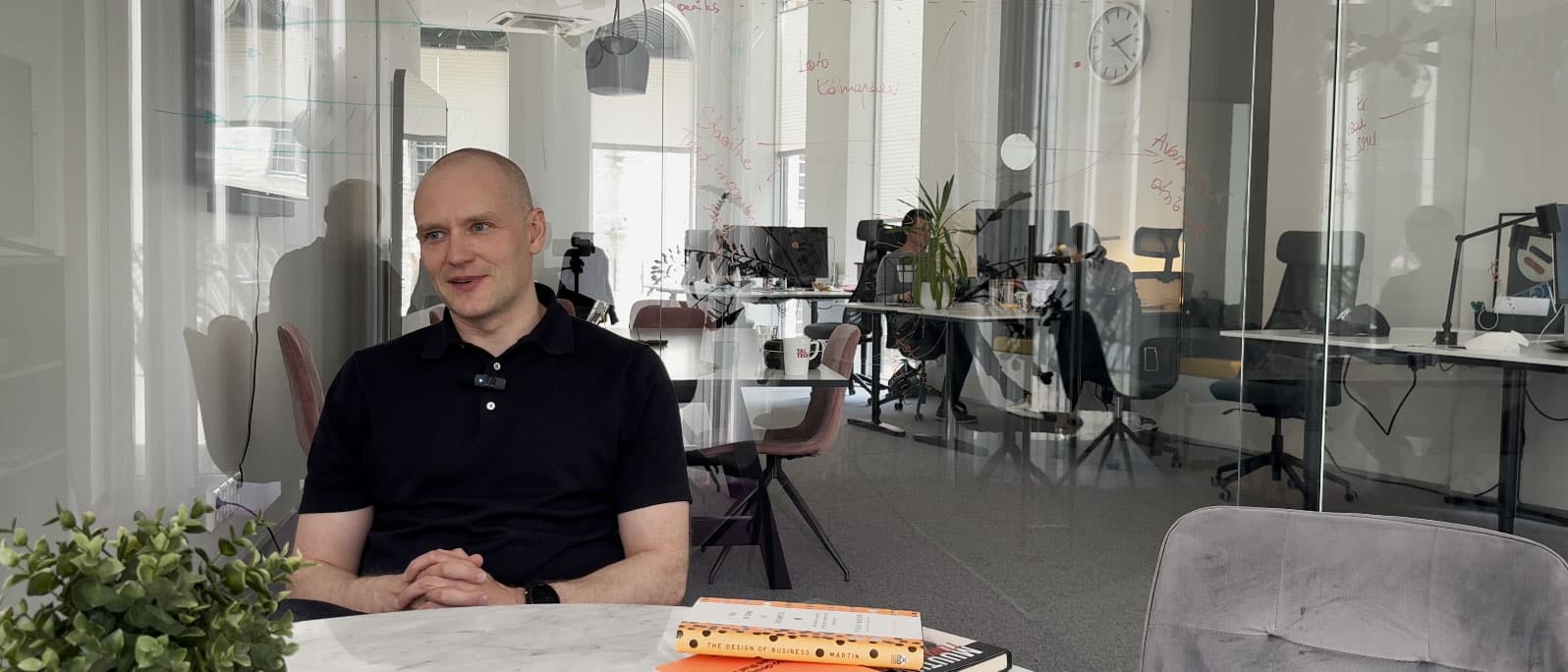From Ice Hockey to Warm Client Conversations in Professional Services
I spoke with him from a shared DNA: sport as the foundation for who we are as business partners. My own journey began in 1976, as an 11-year-old boy with Olympic dreams inspired by Ivo Van Damme’s achievements.
Although I never became an Olympic champion, intensive sport shaped my career and mindset. It is probably no coincidence that my motto today is: “If better is possible, good is not good enough.”
The leap from the runway
“I stopped professional hockey in 2020 and started my own coaching practice,” Lasse explained. “In the beginning, it was uncertain. I didn’t have a large network outside the sports world, but I had my reputation and the skills I had built.”
His first clients came through warm contacts and from people who valued him as a person, not only as a former athlete. Authenticity proved decisive. This emphasis on trust and relationship is essential in professional services like business development, leadership coaching, and strategic advisory—fields where no law mandates our engagement.
Unlike regulated sectors like accountancy or audit, our work is entirely discretionary. Morgan and Hunt (1994) show that trust and relationship drive long-term client loyalty, surpassing even price or product.
Navigating complex airspace: one person, big ambitions
“The hardest thing as a solo entrepreneur,” says Lasse, “is doing everything yourself. Sales, administration, coaching, invoicing—each day only has 24 hours, and you want to maintain your standards.”
I immediately recognize that tension. In non-mandatory professional services, you have big ambitions but limited resources. You must choose: where do you invest your energy?
At Add Business, the principle is clear: focus on clients with the right DNA and dare to say no to those who don’t fit.
Lasse adds: “Nick Rubin from Nordic Business Forum said: you don’t have to know everything before you start. That gave me peace. Learning is part of the process.” Humility combined with perseverance is what elite sport teaches us. You lose more often than you win, but progress depends on showing up.
From cold contacts to warm conversations
I asked Lasse how he finds new clients today. His answer was clear:
“First and foremost, I’m more active in meeting people. That’s why I was at the Nordic Business Forum. I need to go where new people are; otherwise, I’ll never meet them.”
He also reactivates his existing network: “I call former clients and ask: is there something we can do together? Even one new introduction can make a difference.”
No cold campaigns—only personal meetings, lunches, and warm introductions. Bhatia and Yetton (2020) confirm that in professional services, personalized outreach and referrals deliver significantly higher conversion rates. In fields where no one feels an urgent need for our help, building trust and visibility is the essence of business development.
DNA-match: recognizing the right client
“I look for clients with a learning mindset,” says Lasse. “People open to growth and change. I avoid working for clients who just want someone to come and shout at their team. That’s not my approach.”
Both of us know not every potential client fits our philosophy—and saying ‘no’ to mismatches proves as important as saying ‘yes’ to the right ones. In non-mandatory professional services, this selectivity becomes a necessity.
Research shows that focusing on ideal clients—rather than mass marketing—yields the strongest long-term results.
Sport as metaphor: teamwork and connection
Lasse learned on the ice what collaboration really means: “You don’t have to be best friends, but you can respect and value people for what they bring.”
In business development, endurance, self-discipline, and resilience are just as critical. Nahapiet and Ghoshal (1998) describe this as relational capital: the ability to create value through respectful, professional connections, across differences.
This is invaluable in professional services where engagement is always a choice, never an obligation. Building bridges is what grows a market when demand must be created, not fulfilled.
Cultural intelligence: Finland, Belgium, and the power of modesty
We also talked about cultural differences. Lasse described how Finns often doubt their ability to succeed abroad—they’re modest, sometimes too much so. In Flanders, we see the same paradox: pride mixed with constant self-questioning. By working together, we transform modesty into confidence.
He gives me insight into Finnish business culture—honesty and teamwork—while I help him navigate the Belgian ecosystem. Together we build Networks Beyond Borders: human bridges between economies.
Earley and Ang (2003) identify this capacity to work across cultures as a real competitive advantage—especially in professional services with global, voluntary clients.
Helping each other as solos: why 1+1=3
We discovered that solo entrepreneurs can go further together. Not by selling for each other, but by sharing networks and supporting mutual growth.
Granovetter (1973) argues that weak ties—distant or secondary contacts—are vital for unlocking new opportunities. For professionals whose services no client truly ‘needs’ until they choose to, collaborative ecosystems multiply your reach and credibility.
Lessons from this conversation with Lasse
- Authenticity trumps credentials. Clients choose people who inspire confidence and growth.
- Warm relationships beat cold outreach. Events, introductions, and networks create fertile ground.
- DNA-match matters more than volume. Serving clients who truly fit brings satisfaction, even if the pool is smaller.
- Patience and perseverance are essential. Progress is slow, but real.
- Demand must be created, not waited for. In a world where our services are never ‘required,’ visibility, credibility, and relationship-building are the core of business development.
Conclusion: charting a course with sport in the DNA
From Olympic dreams to ice hockey careers, sport shapes both mindset and method. In discretionary professional services, nobody is waiting for us, and that makes our work both challenging and rewarding. Succeeding here depends on creating genuine demand: through connection, insight, and continuous proactive engagement—everything sport has taught us.
If better is possible, good is not good enough.
References
- Bhatia, Amit, and Philip Yetton. 2020. “Personalization in B2B Sales Outreach: Effects on Engagement and Response Rates.” Journal of Business Research 116: 375–86.
- Earley, P. Christopher, and Soon Ang. 2003. Cultural Intelligence: Individual Interactions Across Cultures. Stanford, CA: Stanford University Press.
- Granovetter, Mark S. 1973. “The Strength of Weak Ties.” American Journal of Sociology 78 (6): 1360–80.
- Morgan, Robert M., and Shelby D. Hunt. 1994. “The Commitment-Trust Theory of Relationship Marketing.” Journal of Marketing 58 (3): 20–38.
- Nahapiet, Janine, and Sumantra Ghoshal. 1998. “Social Capital, Intellectual Capital, and the Organizational Advantage.” Academy of Management Review 23 (2): 242–66.
Ready to land in Belgium?
Discover how your company can land smoothly in Belgium — with a co-pilot who knows the terrain, the networks, and the fastest route to success.
From Tallinn to Antwerp: What Estonian companies need to know for a safe landing
In the cockpit of the NBB HUB this time: Pieter Poppelsdorf. For more than 4 years, he has been responsible for promoting Estonian investments within the Benelux, based in Amsterdam. He operates at the intersection of government and entrepreneurship, moving smoothly between policymakers, scale-ups, and investors. What makes Pieter unique is his linguistic talent and cultural compass. He speaks Dutch, Estonian, English, and French. This is not a luxury—it’s his essential work tool. From the Netherlands, he connects with Benelux stakeholders, building bridges between hyper-digital Estonia and the multi-layered decision-making of the Benelux.
He’s a networker with sharp insights and always to the point 😊.
“Forget the Estonian market. For Belgian investors, it’s all about the ecosystem and available talent. You don’t go to Estonia to sell to Estonians. You go for the environment, the network, the people.”
The route is not one-way
What Belgian companies are looking for in Estonia fundamentally differs from what Estonian companies seek in Belgium. That “flight direction” defines everything.
- Belgian companies move to Estonia for tech capacity, agility, and ecosystems.
- Estonian companies want to touch down in Belgium for market share, customer growth, and scaling.
It may seem trivial, but it’s crucial. Belgian companies don’t need to understand the Estonian customer. Estonian companies must understand the Belgian customer. And that’s where it can go wrong.
The challenge is cultural, not technical
Estonian companies are technically strong—brilliant, even. Commercially? That’s often the challenge. Pieter puts it directly:
“Estonians are product-oriented but sometimes lack marketing and sales knowledge. They build something and often think: this speaks for itself.”
In Belgium, nothing speaks for itself. Decision-makers want case studies, comparisons, and preferably a reference from someone they know. A CEO who says, “They really helped us,” opens more doors than ten technical demos.
Communication can also create friction. Pieter explains:
“Estonians expect you to follow up. For Belgians, that can be difficult. In Belgium, if you request a meeting, we expect you to also do the follow-up.”
At the same time, Estonians find Belgian decision-making slow, ambiguous, and tiring. What they perceive as indecision is, for Belgian companies, simply getting everyone on board. It requires guidance and translation—not just of language, but of pace and expectations.
Why Rethink does land in Belgium
The difference between stumbling and landing? DNA and preparation.
Rethink, a digital service design and innovation agency from Tallinn, takes a fundamentally different approach. They follow the entire NBB HUB DNA trajectory. Not a quick pitch, but a thorough process around positioning, value proposition, and cultural translation.
We align their DNA with the Belgian ecosystem, with clear entry points in education and the public sector.
“The quality of the landing depends a lot on the precision of the preparation. Rethink realizes you need to know the landscape before you land in it.”
Belgium a country?
A frequently underestimated obstacle. Companies see Belgium—and by extension the Benelux—as one market.
Pieter laughs:
“The Benelux isn’t a country. Belgium alone is three markets: Flanders, Wallonia, Brussels. Each with different rules, networks, and expectations. And that applies to the Netherlands too.”
That’s why local guidance isn’t a luxury. It’s the only way to avoid months lost to misunderstandings, cold contacts, and false assumptions. The NBB HUB isn’t an intermediary, but a navigation partner. Not “we’ll do it for you,” but “we’ll teach you to land as it works here.”
Ready to land in Belgium?
Discover how your company can land smoothly in Belgium — with a co-pilot who knows the terrain, the networks, and the fastest route to success.
NBB HUB: Helsinki as Proof of Concept — Two Days, One Living Ecosystem
Helsinki as Proof of Concept: Two Days, One Living Ecosystem
The Nordic Business Forum in Helsinki was much more than an event. It became the moment where I could truly put my methodology to the test.
Walk your talk: the ultimate test
With Add Business, I step in as a co-pilot. With Companyonwise, I always start from DNA Discovery — the process of uncovering what truly drives organizations. I apply that same logic to myself. The connection between Brussels and Tallinn is no coincidence; it’s a deliberate strategy — to build a living ecosystem that helps Nordic and Baltic companies enter Belgium, starting from their own DNA.
But this had to be more than just a strong narrative. It had to be proven — in practice, at a single event. I had two days. No team, no luxury of preparation. Only the Brella app — a matchmaking platform that connects people based on shared profiles and interests — and one belief: if this methodology worked, I would be able to assemble a functioning ecosystem in 48 hours.
Growth, innovation, and digitalisation: the driving force of the ecosystem
During the Nordic Business Forum, a mosaic of connections came together in just two days. The network included professionals from software development, leadership, talent acquisition, legal, sales, branding, and education. Names like Timo Kempanen (Growth Agency), Kai Lempinen (Appmore), Lasse Kukkonen (Leadership Coaching), Lise-Lotte Laane (Sorainen), Juha Qvick (SalesFrame), and Mari-Liis Ahven (Optimist Public) represented more than business functions — they became the building blocks of an ecosystem connecting technology, people, and markets.
The result was not a loose collection of conversations, but a coherent network of fourteen complementary experts — each contributing their own strength: growth, innovation, digitalisation, human development, branding, legal expertise, and academic insight. Together, they form the essence of what NBB HUB stands for: a multidisciplinary, international alliance where knowledge, network, and practice reinforce one another to create sustainable market access.

From markets to ecosystems: the bigger picture
When I founded NBB HUB, I — like many others — approached it through the lens of markets, data, and entry strategies: approaching companies, creating analyses, mapping out competition. Important, but incomplete. Modern businesses no longer operate in isolated markets, but in dynamic networks of collaboration and co-creation. This is even truer once those networks cross borders. Belgium is the perfect example: a country that seems complex at first glance, but whose diversity makes it a natural hub for European expansion.
Research confirms that business ecosystems — networks of organizations that cooperate and compete in the delivery of goods and services — are now critical for innovation, sustainability, and competitiveness (Espina-Romero et al., 2023).
But an ecosystem is much broader than just events. It includes universities and business schools (such as Vlerick, Solvay, and Antwerp Management School) that nurture talent and share knowledge; sector federations (like Agoria, Fevia, and essenscia) that represent their industries; and membership organizations (such as Voka and BECI) that unite thousands of companies. The art of internationalisation lies in knowing where these worlds intersect — and how to gain strategic access to them.
The human factor: DNA as a compass
This vision took shape for me last year when I met Lars-Erik Hion and Jana Kukk of Rethink on the same stage. Together, we mapped their organizational DNA — their authentic simplicity, their strength. That DNA became the foundation of their growth. Their story confirmed what I intuitively already knew: success in a new market doesn’t begin with data or strategy, but with identity. Companies that land successfully don’t come merely to find clients; they come to find partners who resonate with their DNA. That’s how sustainable ecosystems are built — from the inside out.
Theory becomes practice
The beauty of the NBB HUB narrative is that it is not based on theory to be tested later, but on real-time evidence. Helsinki became the proof of concept. I preach ecosystem thinking, I start from DNA Discovery, and I offer co-pilot guidance — and in Helsinki, I demonstrated that it works. In just 48 hours, I built a living ecosystem: fourteen professionals, six sectors, three countries. No spreadsheets, no reports — just practice that worked.
NBB HUB doesn’t operate from a distance but through proximity. Ecosystems are not static structures — they are living organisms. They grow, shift, and adapt. Their power lies in connection — exactly what Helsinki revealed.
References
- BCG Henderson Institute. Building Trust in Business Ecosystems. Boston Consulting Group, 15 September 2022.
- Espina-Romero, Laura C., et al. 7 Topics That Business Ecosystems Navigate: Assessment of Scientific Activity. Frontiers in Environmental Science 11 (2023).
- Rifa’i, A., Wibowo, A., & Kurniawan, A. Three Decades of Research in the Field of Business Ecosystem: A Bibliometric and Content Analysis. Cogent Business & Management 10, no. 2 (2023).
Ready to land in Belgium?
Discover how your company can land smoothly in Belgium — with a co-pilot who knows the terrain, the networks, and the fastest route to success.
Cockpit interview with Lars-Erik Hion from Rethink
That’s how our collaboration with Rethink, a digital agency from Tallinn, began. Their founder, Lars-Erik Hion, captures it perfectly:
“Complexity happens naturally. Simplicity is something you have to fight for every day.”
What started as a spontaneous conversation grew into a journey where Rethink, through our DNA Discovery approach, sharpened its unique identity — and became our very first client outside the Benelux.
Who is Rethink?
Founded six years ago in Estonia, Rethink has become one of the leading service design agencies in the Baltic region. Their expertise? Guiding organisations through the design phase of better digital services — long before the first line of code is written.
“We try to shine in the preparation phase of a software development project. Anything with a digital touchpoint — that’s what we do on a daily basis.”
What truly sets them apart is not just what they do, but how they do it: human-focused, crystal-clear, and with a near-obsessive focus on simplicity.
“We try to make technology as human as possible.”
Simplicity as DNA — and as daily discipline
Rethink’s DNA statement impact through simplicity might sound light, but it’s anything but superficial. In a world where digital complexity keeps growing, simplicity is not an aesthetic preference — it’s a conscious, daily choice.
“It’s a constant reminder of what we need to be.”
During the DNA Discovery sessions, we uncovered what was already there — but had never been named. Not as a slogan, but as an anchor for how they work, communicate, and grow.
The click in Helsinki
I’ll admit it: I arrived at the Nordic Business Forum with sweaty palms. It was our first time there with Companyonwise, and I couldn’t help wondering: Do we even belong here?
Then, during one of the speed-date sessions, I found myself across from Lars-Erik. That one conversation changed everything. No sales pitch. No bravado. Just a shared sense of curiosity, clarity, and trust. Two entrepreneurs with a love for simplicity, for the people behind the organisation, and for clarity that goes deeper than any tagline.
“Everything is about human connection,” Lars said later. “We met the Companyonwise team and immediately felt something. You brought experience and empathy — and that’s rare.”
For me, it was the turning point. Yes, we belonged there. Not to prove ourselves — but to truly connect.
From boardroom to shared story
The power of the process lay in the dynamic. Hierarchies dissolved. Titles disappeared. Everyone spoke as a person, not a position.
“It put management and the rest of the team on the same level. We got rid of the usual roles — founder, new joiners, owner — and simply listened to each other.”
It gave the process oxygen, created openness, and built shared ownership. And it helped Rethink realise that impact through simplicity wasn’t external advice — it was an internal truth.
DNA before strategy
For Rethink, DNA is not a strategic document. It’s the foundation everything else rests on.
“The DNA should come even before strategy, mission, or vision. When we hire, a DNA match is more important than alignment with our mission.”
DNA became their touchstone for decisions, dialogue, recruitment, and collaboration. Because simplicity only becomes powerful when you name it — and protect it.
Exporting Baltic simplicity
Estonia is a digital frontrunner. What’s still a future goal elsewhere is already reality there. But for an agency like Rethink, the local market has its limits.
“Estonia has been punching above its weight. But for a company our size, the local market becomes small quickly.”
That’s why they’re deliberately looking beyond their borders. Their mission: to export Baltic simplicity. Not as a visual style, but as a way of thinking. And their DNA became the anchor for that ambition.
What stuck?
The sessions with Companyonwise weren’t about branding or positioning — they were about reconnecting with who they had always been.
“It helped us rethink ourselves a little — and that was valuable.”
No glossy language. Just an open process that proved once again: simplicity doesn’t happen by accident. But once you name it together, it lives on — in every detail.
From Helsinki to the Baltics
What began with one conversation in Helsinki became our first DNA Discovery project outside the Benelux. Rethink became our pioneer in the Baltics. And it confirmed what I felt in that first meeting: simplicity works. Connection works. And even when the work is serious, it should still be fun.
Ready to land in Belgium?
Discover how your company can land smoothly in Belgium — with a co-pilot who knows the terrain, the networks, and the fastest route to success.




